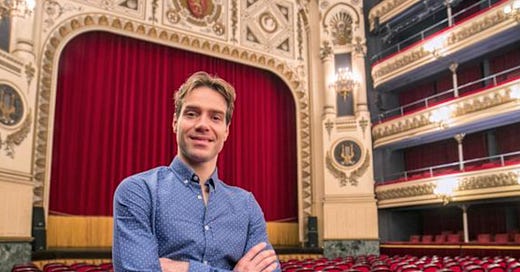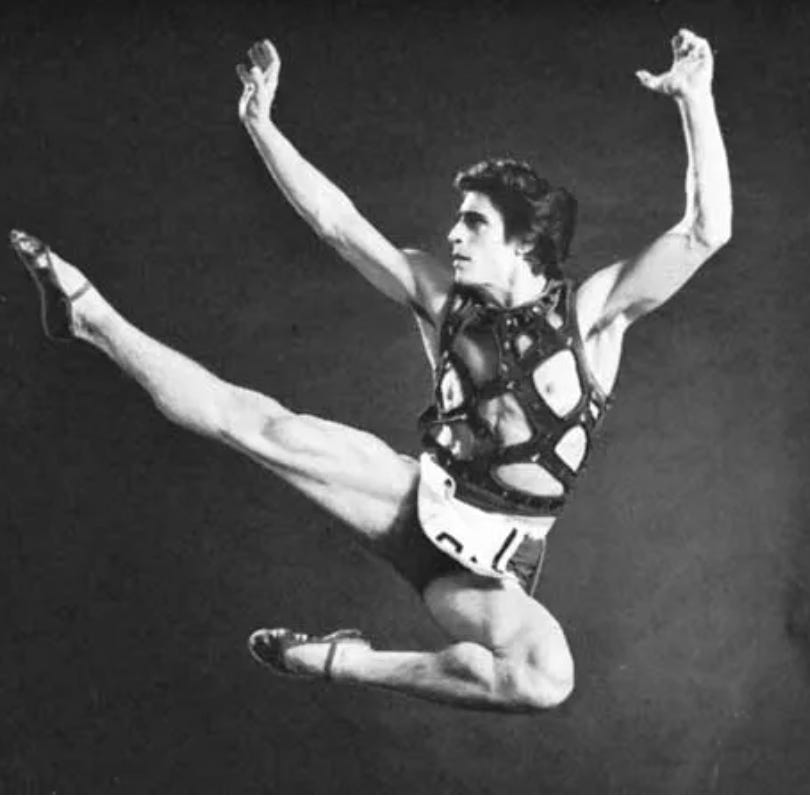The clangs in the march of time in the ballet world have gone from a few distinct notes to a cacophony of endings, beginnings and shifts in philosophies.
In this edition:
-Gonzalo Garcia’s new role at Miami City Ballet
-Misty Copeland’s retirement and legacy —Ashton Triple on Marquee TV
—Ballet of the week: Ashton’s A Month In The Country
Gonzalo Garcia, former NYC Ballet Principal will become Miami City Ballet’s new artistic director.
Gonzalo Garcia, Miami City Ballet’s New Artistic Director
Miami City Ballet, founded in the 1980s by NYC Ballet superstar Edward Villella, was part of the Balanchine-inspired ballet boom in the U.S. Balanchine developed a distinct movement style and aesthetic at NYC Ballet—shaped by his imperial training, his partnership with Stravinsky, and his encounters with New York’s artistic ferment, including jazz music and modern dance (notably Katherine Dunham). His students and dancers carried those seeds across the country, shaping schools and companies in his image.
Edward Villella, 1960, in the title role of “The Prodigal Son”, by the choreographer George Balanchine.
Now, Gonzalo Garcia will become MCB’s third artistic director, following the sudden departure of Lourdes Lopez two years before her contract expired.
Garcia has expressed a desire to build a stronger bridge between NYC Ballet and Miami, though what that means remains to be seen. In many ways, the connection already exists: a large percentage of MCB’s dancers come from SAB, NYC Ballet’s official school, and the repertory is closely aligned. Garcia has also said he wants to bring in works by Forsythe and Mark Morris, and to develop new choreographic voices.
That last part is urgent. American ballet companies often recycle a familiar loop of “new” work—Peck, Tharp, Ratmansky, Forsythe—alongside the ever-present Swan Lake, Nutcracker, and Romeo and Juliet. A deeper pipeline is needed. But with arts funding in sharp decline, risk-taking is harder than ever.
Maybe Gonzalo Garcia will be one of the few to take that risk—to discover, fund, and elevate the next generation of dance-makers.
Misty Copeland Announces Her Retirement: Continuing a Legacy Beyond the Stage
Misty Copeland has announced her official retirement, which will be performed and feted in the fall. Copeland has not been onstage in the traditional sense for five years, but she has continued her work through various projects and is frequently in the media.
Dancers have different legacies. Copeland’s—in addition to being the first Black female Principal Dancer at American Ballet Theatre, and all that that represents—will lie in her celebrity itself. The very fact that she is so well known has introduced countless young dancers—across all races—to the art form.
There existed (and perhaps still exists) an older school of thought in the dance world that believed the dance artist should be humble—a renunciate devoted to their craft, letting others sing their praises and tell their stories. But it is through the reach of media—film, photographs, recorded performances, interviews, whether through their own channels or someone else’s—that many dancers are imprinted into the history books (literally and proverbially), and it is the way they continue to inspire the next generations.
For example: ABT’s recording of Swan Lake with Gillian Murphy and Ángel Corella moved the hearts of millions; PBS’s airing of Gelsey Kirkland and Mikhail Baryshnikov in The Nutcracker sparked many a career. Yuan Yuan Tan—the great San Francisco principal—decided to become a dancer almost 50 years ago after seeing a rare recording of legendary prima Galina Ulanova.
Misty Copeland’s use of her name and her historic rise through the ranks to keep herself and the art form in the media—to write books, to create programs—will be a light that continues long into the future.
Ballet Of The Week! Ashton’s A Month In The Country
Frederick Ashton’s A Month in the Country is a delicate, aching portrait of repressed desire and fleeting joy. Based on Ivan Turgenev’s play—originally banned for its frank portrayal of emotional longing—the ballet unfolds in a single summer afternoon, capturing the quiet turbulence beneath a refined 19th-century Russian household. Set to the music of Chopin (arranged by John Lanchbery), Ashton’s choreography is lyrical, nuanced, and steeped in melancholy.
Superstars Marianela Nuñez and Matthew Ball play the leads in this fab Royal Ballet production.
Join me for the watch party available HERE on Marquee TV.














Share this post